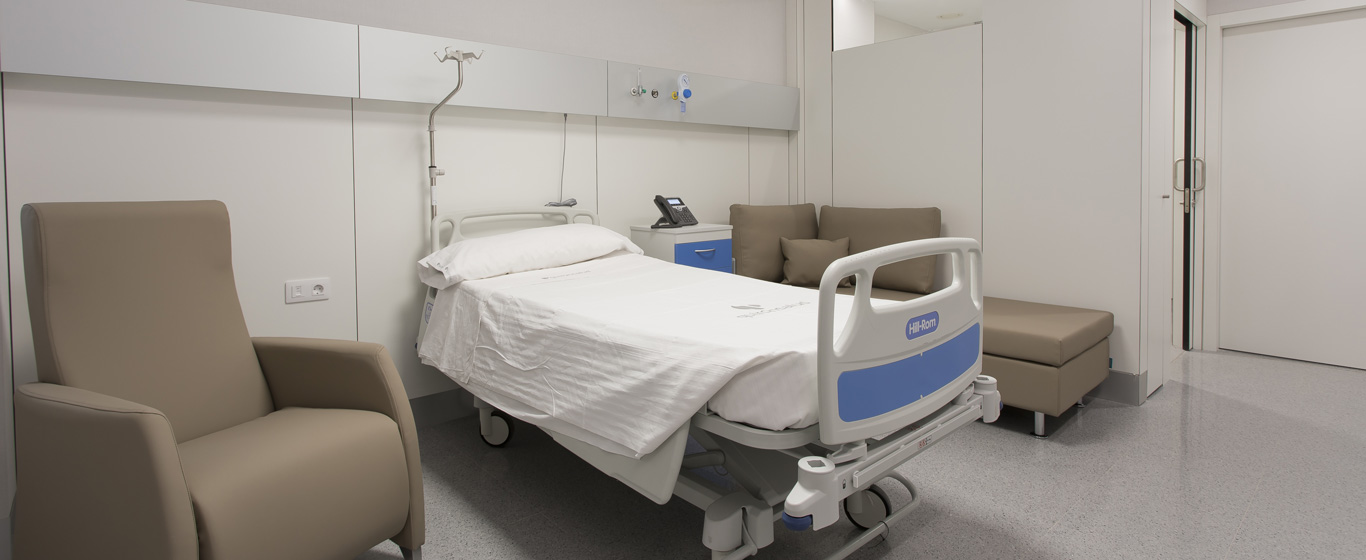Radiosurgery
Radiosurgery is a procedure that applies high doses of radiation in a localized manner to a tumor to reduce malignant cells. It is an external technique that does not require incisions.

Despite its name, radiosurgery is an external technique that does not require making incisions in the patient. This procedure delivers high doses of radiation with precision to tumors, effectively destroying cancerous cells. By reducing the number of sessions required, it minimizes harmful effects on healthy tissue.
Depending on how it is applied, radiosurgery is classified into two types:
- Stereotactic Radiosurgery (SRS): High-powered radiation beams are precisely focused on a specific area, usually in the brain, neck, lungs, liver, or spine.
- Radiosurgery or Stereotactic Radiotherapy: The total radiation dose is divided into small fractions applied daily, allowing healthy tissue to repair more easily. It is particularly indicated for critical structures such as the brainstem (which controls many vital functions) or the optic pathways (which transmit nerve impulses from the retina to the brain).
Different Technologies Used in Radiosurgery
Several types of technology can be used in radiosurgery, mainly:
- Proton Therapy: Instead of using electrons or photons, as in traditional radiotherapy, proton beams are directed at tumors. This energy does not pass beyond the cancerous cells, increasing its effectiveness and reducing damage to surrounding tissues.
- Gamma Knife: Used to treat medium-sized brain lesions or to correct abnormalities in vein and artery connections. It utilizes multiple gamma-ray beams that safely converge on the damaged areas.
- Linear Accelerator (LINAC): Suitable for treating large tumors both in the brain and other parts of the body. This technology uses high-intensity X-rays (photons) to destroy cancer cells. One of the most advanced innovations is CyberKnife, which provides highly accurate treatment with minimal deviation.
Radiosurgery is often recommended for patients with hard-to-reach tumors or those for whom surgery is contraindicated.
How Does It Work?
Before performing radiosurgery, imaging techniques are used to locate the exact position of the tumor. Once the most appropriate treatment plan is designed, radiation beams are directed at the cancerous cells to close the blood vessels that supply them and alter their DNA. This change slows or stops their growth. Since the tumor cells can no longer multiply, they undergo necrosis and eventually disappear as healthy tissue regenerates.
What Are the Benefits of Radiosurgery?
Some of the most significant benefits of radiosurgery include:
- Treats tumors and lesions with millimeter precision.
- Delivers a very high dose of radiation.
- Offers extreme accuracy, minimizing errors.
- Causes minimal damage to healthy tissue.
- Is a non-invasive procedure that does not require surgery.
- Can completely destroy the tumor.
When Is It Indicated?
Radiosurgery was initially used to treat brain tumors. However, over time, it has been adapted for other conditions, including:
- Malformations in veins or arteries.
- Trigeminal neuralgia.
- Benign tumors located in the auditory system.
- Cancer in the pituitary gland, lungs, liver, eyes, prostate, or spine.
What to Expect from Radiosurgery
Radiosurgery is performed on an outpatient basis, meaning patients can resume their normal routine after the procedure. Depending on the technique used and the number of sessions required, the process can take between 45 minutes and several hours.
On the day of treatment, patients are advised to wear easily removable clothing and avoid using makeup or nail polish. Additionally, glasses, contact lenses, dentures, and any metallic items must be removed.
Before undergoing radiosurgery, patients must sign an informed consent form and wear the medical gown provided by the healthcare center. While lying down, patients must remain as still as possible, so anesthesia may be used for children or a mild sedative for adults, especially during long sessions. The treatment table slides into the device that emits radiation, which may produce noises and move as needed.
During the procedure, the patient remains alone in the room. However, specialists monitor them continuously through a system of cameras and microphones. Radiosurgery itself is painless, but the situation may cause nervousness or anxiety. If any concerns arise, patients should notify the medical staff.
Some patients experience mild side effects, such as fatigue or skin redness in the treated area. To soothe irritation, it is recommended to use creams specifically designed for this type of treatment.
Medical Specialties That Use Radiosurgery
Radiosurgery is used in oncology and radiation oncology.




















